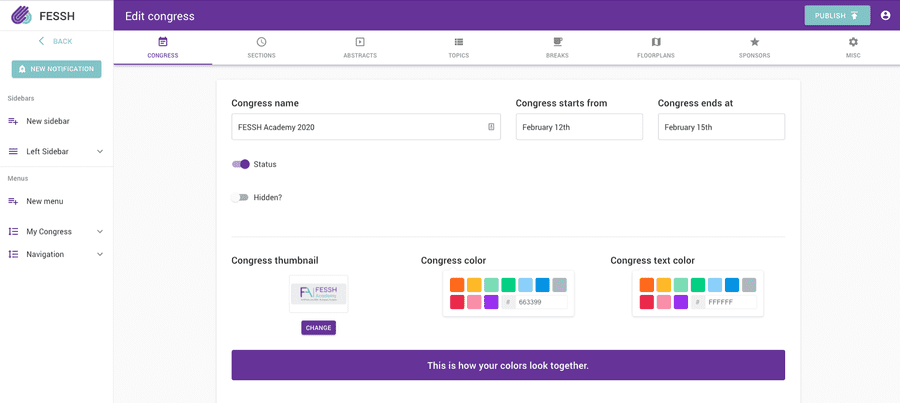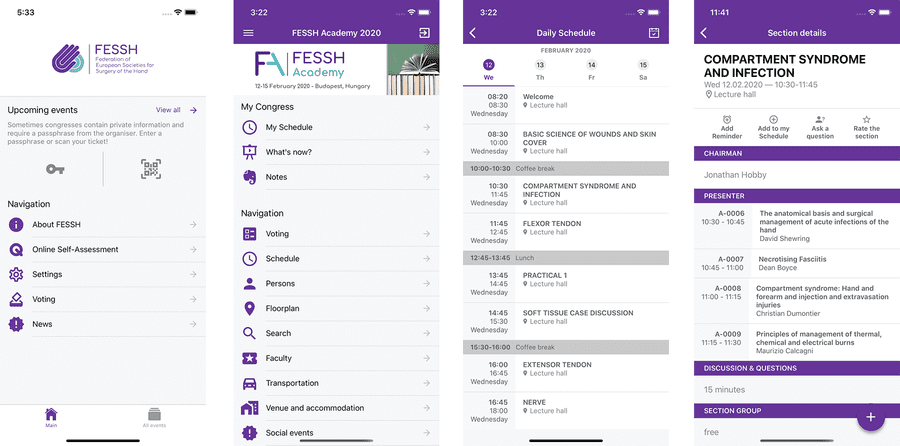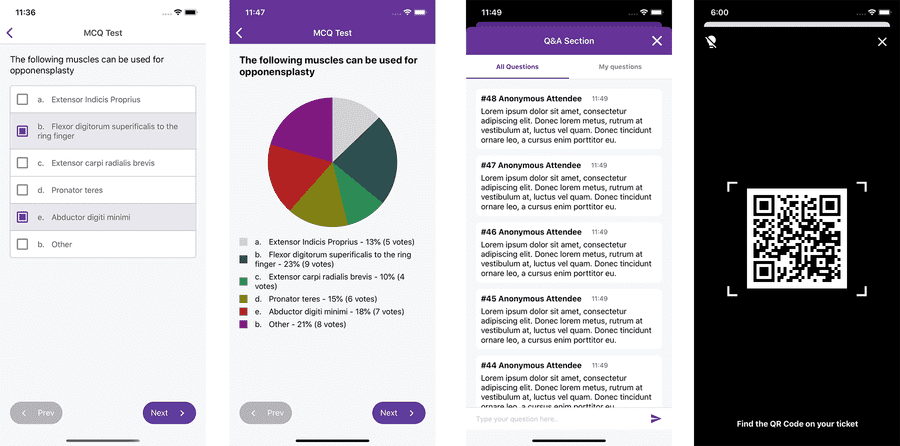How I helped achieve interactive and paperless communication during conferences
My roles: Project manager, Mobile application developer, Backend architect
Tech: React Native, NodeJS, Express, GraphQL, MySQL, OneSignal, AWS S3, Redis, CodePush
The problem
FESSH is a Swiss-based hand surgeon company that organizes several conferences each year. The company wanted to make its internal communication more efficient and to deliver the latest news and programs to users as soon as possible. To create a year-round marketing channel, it was important to make the conference materials available afterwards the conferences for those who might have missed out. The goal of the company was to provide participants with real-time information about the event interactively and in a personalized interface during the conferences. After the application is completed, the conferences have become much smoother and more transparent, and customers can access relevant information faster based on feedback.
Full Control over the Appearance and Content
Our client wanted the application to be able to handle multiple parallel running conferences and to have a wide range of tools available to customize them. The appearance of each event can be changed to a unique look: you can change the colour of the event-theme or upload a custom header image. You can freely modify all content by editing the menu system. Conference data, such as sections or abstracts, is stored in the company’s database, from where the backend updates it via an API. On special request, the data stored in the application is continuously available through the offline mode. The information will be downloaded and stored on your phone during the installation process. Before opening conferences, we are checking whether the content has changed since the last use; if yes, we download the refreshed database.
Unique Identification of Users
An important consideration during the planning process was that some conferences and functions could only be accessed after registration. Participants can download the hidden conference by scanning the QR code on their purchased ticket or entering a unique password. The application displays the services and lunch tickets purchased by the user. Exhibitors have the opportunity to scan the QR code of visitors to simplify the exchange of business cards.
Interactive Solutions
We put a lot of emphasis on developing interactive features. Each presentation can be evaluated separately, which gives feedback to the organizers to see which speaker was the most interesting for the participants. Speakers often ask questions to the audience. The application allows you to compile a set of questions before the conference, which will be available at a specified time to anyone who knows the PIN code for it. The results of the answers and voting are available on the phone or the spot projected on the wall. In a longer, multi-venue conference, participants need to remember the time when they would like to attend presentations they are interested in. In the application they can compile a list of presentations to be visited in advance, the application optionally sends a push notification to the participant's phone before the presentations. You can also export your compiled presentation-list to your favourite calendar application.
21st-century technology background
It was a basic requirement to be able to download the application on both iOS and Android platforms, but developing a separate native application for each platform is costly and time-consuming. Finally, we decided to use the React Native framework developed by Facebook, which provides an opportunity to develop with a one-code-base for both platforms. It is important to mention that unlike previous cross-platform solutions, React Native provides a real, native front-end user experience with its truly native components. The framework is used by a lot of large companies such as Airbnb, Facebook, Instagram, or Baidu. During the development, we involved the client in the testing process as early as possible. The completed components were published continuously. With this method, we quickly recognized the problems and minimized the amount of code to be repaired. Thanks to the OTA (over-the-air) update mechanism you do not have to wait several days for the security check of stores: critical updates can be downloaded by users immediately after opening the application.


